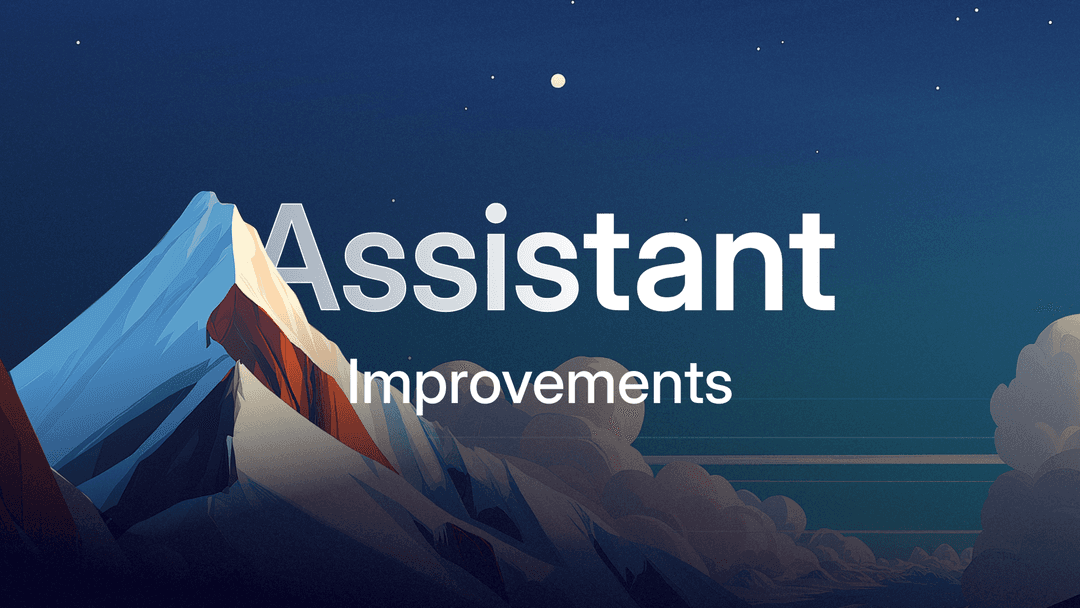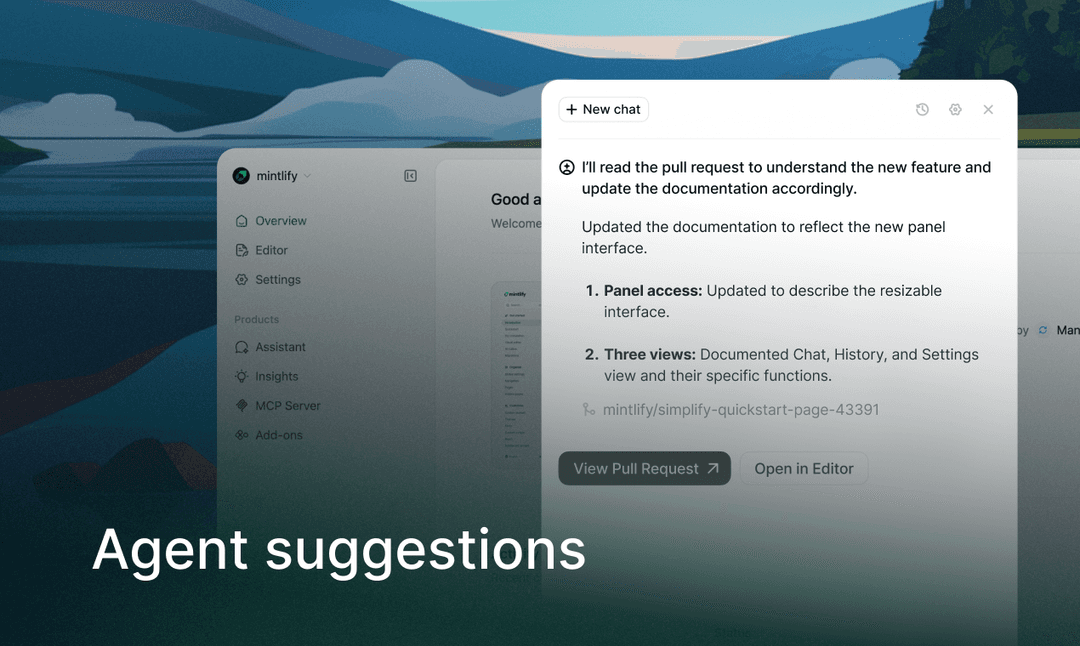Top Gitbook alternatives for API documentation in 2025
February 6, 2025
Emma Adler
Contributor @ Hackmamba
Share this article

This guide evaluates the top GitBook alternatives for API documentation in 2025, covering tools like Mintlify, Stoplight, Postman, Redocly, API Hub, and Readme based on user experience, developer workflows, collaboration, maintenance, AI readiness, and pricing. The comparison helps teams choose the right platform as AI becomes central to how developers discover and interact with product documentation, ensuring their tools match modern developer expectations and workflows.
Your API documentation needs from one year ago isn't necessarily what you need today—especially with how fast the developer tools landscape is changing. As AI becomes a core part of how users discover and interact with products, your documentation needs to keep up with modern developer expectations.
Whether you're rethinking how your docs are ingested by LLMs, looking for deeper customization, or just want a workflow that better matches how your team actually builds, there's a growing ecosystem of API documentation tools to choose from.
This guide breaks down the top alternatives to GitBook in 2025, each with its own strengths depending on what matters most to your team.
Why explore GitBook alternatives?
GitBook is a popular and approachable platform for creating technical documentation. But if you're exploring alternatives, it's necessary to ask: what's prompting the search?
Understanding the underlying reasons can help you evaluate which tools are actually a better fit, rather than simply swapping one platform for another.
Here are criteria to consider as you assess what matters most to your team:
- User experience - How quickly can users find and access information?
- Developer experience for editing - Does it work with your developers' existing tools and processes? Do you need docs-as-code?
- Collaboration capabilities - Can all stakeholders contribute effectively?
- Maintenance efficiency - What automations help keep content accurate and current?
- AI readiness – Are your users increasingly using AI, and you need your documentation to be optimized to fit their workflows?
- Pricing and scalability – Does the cost model work for your current team size and growth plans?
By getting clear on these priorities, you'll be in a better position to find a documentation solution that grows with you.
Let's explore some leading alternatives to GitBook and what makes each unique.
1. Mintlify: Developer-focused, AI-native documentation
Mintlify is the documentation platform modern teams like Anthropic, Zapier, and Perplexity rely on. It's designed for developers—integrating directly into git workflows, with markdown support and flexible config.
Teams choose Mintlify for its thoughtful design components, clean layouts, and AI-native features that make it easier to build, maintain, and scale great docs.
Notable capabilities:
- Docs-as-code workflow with markdown, git sync, and preview deployments for a better developer experience to edit
- AI documentation integrations such as /llms.txt, /llms-full.txt, .md, and MCP server generation
- Visual editor with bi-directional git sync for collaboration
- Fast AI-powered chat to deliver contextual answers
- Interactive, responsive API playgrounds
- Lightning-fast page load times
Pricing structure
Mintlify's pricing follows a tiered structure designed to accommodate different team sizes and requirements:
- Free: Includes a single editor, custom domain, Git sync, web editor, in-app search, API playground, and basic CSS/JS customization
- Pro: Supports 5 editors with advanced analytics, AI-powered chat responses, an AI assistant writer, and article feedback collection
- Growth: Expands to 20 editors and adds preview deployments, password protection, grammar and styling checks, custom homepage, removal of Mintlify branding, and increased AI chat credits
- Enterprise (Custom Pricing): Offers white-glove migration, end-user authentication, SSO login, multiple sites management, and security and legal reviews
For most up-to-date prices, check out Mintlify's pricing page.
Who it's best for
Mintlify is built for developer-first companies that want to reduce friction for developers to contribute, deliver an exceptional experience for end users, and make their docs easy to navigate—for both humans and AI.
2. Stoplight
Stoplight offers an integrated platform for API design, testing, and documentation that keeps all aspects of API development connected.
Notable capabilities:
- Visual API designer with OpenAPI integration
- Built-in API mocking and testing
- Interactive API reference documentation
- Governance tooling for consistency across APIs
- Style enforcement and quality checks
Pricing Structure
Stoplight offers a range of pricing options to accommodate different team sizes and needs:
- Free: Limited to 1 user and 1 project, but includes core API editing and documentation features
- Basic: $52/month for 3 users, with unlimited projects and additional features
- Startup: $137/month for 8 users
- Pro Team: $423/month for 15 users
- Enterprise: Custom pricing with additional security, support, and specialized features
Who it's best for
Stoplight works well for teams that value OpenAPI-driven development and need robust governance features to maintain quality and consistency across multiple APIs.
3. Postman
Postman transforms collections into documentation that stays synchronized with actual API implementation.
Notable capabilities:
- Automatic generation from Postman collections
- Dynamic updating when collections change
- Embeddable "Run in Postman" functionality
- Team collaboration through commenting and reviews
- Environment variable support for different contexts
Who it's best for
Postman's documentation solution can be a natural extension for teams already deeply embedded in the Postman ecosystem for API development and testing.
4. Redocly
Redocly focuses on creating documentation for OpenAPI specifications.
Notable capabilities:
- Render OpenAPI docs
- Render GraphQL SDL files
- Render AsyncAPI files
- Linters for enforcing structures
Pricing structure
- Pro - $10 per seat/month, including 1 project and 100 pages
- Enterprise - $24 per seat/month, including 500 pages, SSO, remote content, etc
Who it's best for
Teams committed to OpenAPI specifications that want to create basic reference documentation.
5. API Hub (formerly SwaggerHub)
API Hub (formerly SwaggerHub) offers a solution for defining, documenting, and managing OpenAPI specifications.
Notable capabilities
- Define APIs in OpenAPI or AsyncAPI format
- Host all API definitions in a single place
- Share APIs publicly and privately
Pricing structure
API Hub offers several pricing tiers:
- Individual: Starting at $19/month
- Team: Starting at $29/month
- Enterprise: Starting at $49/month
- Enterprise Plus: Custom pricing for specialized needs
Who it's best for
API Hub is suited for organizations that want tight integration between API design and documentation, with a focus on maintaining OpenAPI definitions as the single source of truth.
7. Readme
Readme provides a balanced platform that supports both technical and non-technical contributors to documentation.
Strengths
Overview: With its focus on making documentation accessible to create and maintain, Readme helps teams collaborate across technical boundaries. The platform supports both conceptual content and API references in a unified environment.
- Supports both WYSIWYG and docs-as-code workflow
- User feedback collection
- Customizable landing pages and navigation
Pricing structure
- Free - includes OAS/Swagger support
- Startup - $99/month - includes custom domain support, guides, discussion forums
- Business - $399/month - includes custom CSS/HTML, exportable metrics
- Enterprise - $3000+/month - includes custom JS, staging environment, SSO, etc
Who it's best for
Cross-functional teams that want to prioritize how non-developers contribute to documentation.
Finding your ideal GitBook alternative
When selecting an API documentation tool, it's essential to align your choice with your team's specific workflow preferences, technical requirements, and budget constraints.
If you're interested in learning how Mintlify can up-level your documentation, you can try it out for free today.
More blog posts to read

Inside our effort to improve the Mintlify assistant
A data-driven look at improving the assistant, powered by ClickHouse and deeper feedback analysis.
December 12, 2025Patrick Foster
Software Engineer

Introducing the next step towards self-updating docs
The agent now monitors your codebase, proactively identifies documentation updates, and surfaces needed suggestions to your team.
December 8, 2025Han Wang
Co-Founder
Emma Adler
Contributor @ Hackmamba